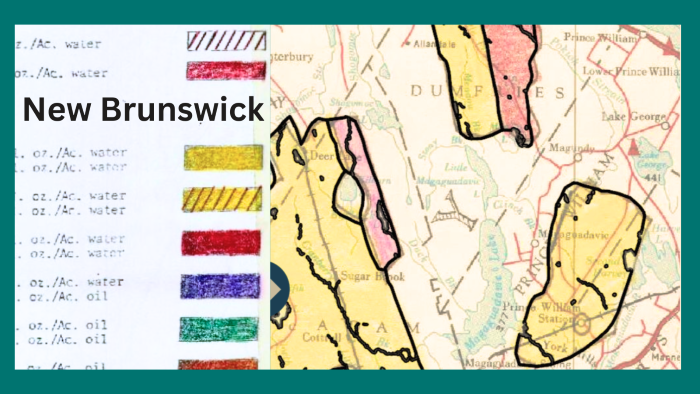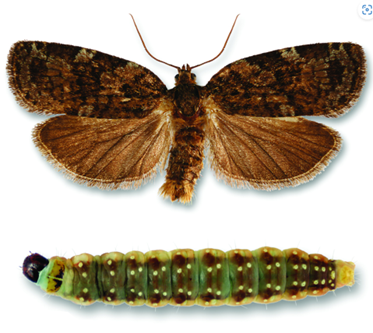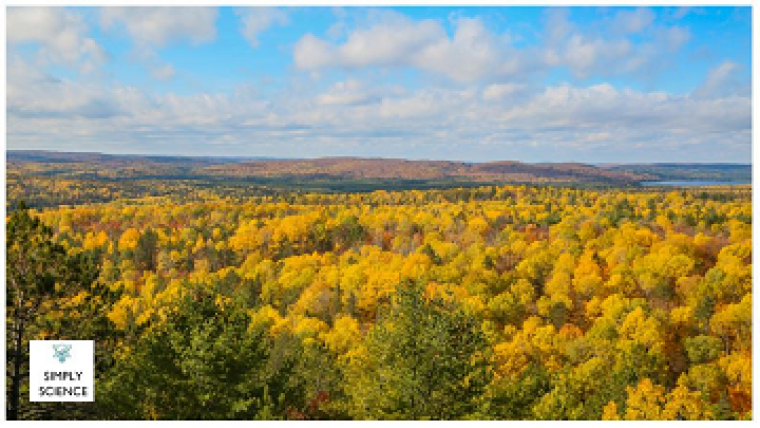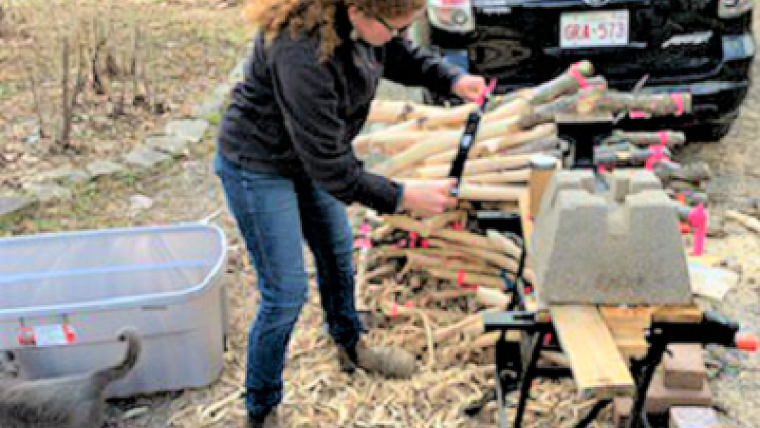Q&A: Historical pesticide use in New Brunswick
From 1952 to 1993, one of the world's largest aerial pesticide application programs occurred in New Brunswick. During this time, 97 percent of the province's 6.2 million hectares of forested land was treated with at least one pesticide. A team of researchers and scientists have now compiled and published historical records of pesticide use. The goal is to make the data available to help future studies on the environmental fate — which is what happens to a pesticide once it enters the environment — as well as ecosystem recovery and the legacy effects of this historical program.
May 2023
Pesticides have been used to control insect pests in Canadian forests since 1945, and one of the largest and longest aerial spray programs occurred in New Brunswick from 1952 to 1993. The most well-known insecticide applied during this period was dichlorodiphenyltrichloroethane (DDT), which was used to control outbreaks of eastern spruce budworm. Scientists have made a new set of historical data publicly available through the New Brunswick Department of Natural Resources and Energy Development — GIS Open Data, which includes details such as ingredient descriptions, formulations, application rates and even the type of aircraft used. The data paper is published in Ecology.
Chris Edge is a research scientist at the Atlantic Forestry Centre in Fredericton, New Brunswick. He’s one of the authors of the paper.
Questions:
A wide range of scientists and organizations were involved in pulling all this information together. What does this group hope to achieve by bringing all these data sets together in one place?
Chris Edge: A group of researchers at the Canadian Forest Service and with the province of New Brunswick first started pulling the data together in the early 2000s, and the current team picked up where they left off in 2020. Our goal was to make the datasets available to researchers and the public. For researchers, having the datasets allows them to create more specific studies. For example, the efficacy of past applications can be used to better design current-day pest control strategies, and accurate application datasets give researchers a powerful tool to use in the study of whether ecosystems have recovered.
It’s also really important that these data be available for the public to easily view and understand. So we have published a paper describing the data and created a storymap to describe it, hoping to provide the extra context and caveats associated with the dataset.

Legend and map detail of spruce budworm treatment in New Brunswick from 1977.
Was there anything, or any finding, which stood out to you after reviewing the historical data set that you think people should be aware of?
Chris Edge: The timeline of application and the number of pesticides applied were surprising. When historical pesticide applications are mentioned, first thoughts often turn to DDT and the negative environmental consequences of its application. What is surprising is that DDT was not the most commonly used or heavily applied pesticide to New Brunswick forests, fenitrothion was. Fenitrothion does not persist in the environment like DDT, but research has shown that it’s toxic to fish and invertebrates. The summary data we present shows the timeline of application and the total area each pesticide was applied to.
The biological Bacillus thuringiensis insecticides, commonly called BT, are broadly considered non-toxic to non-target species. Different versions are widely used around the world to control various insect pests. It might be surprising to some that Bacillus thuringiensis kurstaki (BTK) was first used in New Brunswick in 1975. BTK is currently used as part of the Early Intervention Strategy for Spruce Budworm in New Brunswick and Newfoundland.
This paper is about informing future research and isn’t meant to be a look back at environmental impacts, but people will be curious about DDT use and wonder if it’s still present in the soil. What do we know about lingering pesticides?
Chris Edge: The short answer is a lot, but probably not enough. There is a lot of information on the distribution of pesticides like DDT that do not break down in the environment. Recent research shows that in areas where DDT application was high, it is still present in lake sediment and the zooplankton communities differ from those in regions where the product was not applied. Research on the persistence and current day effects of DDT is ongoing and being conducted by research teams led by Josh Kurek from Mount Allison University and Karen Kidd from McMaster University, among others.
It is important to note that most pesticides currently applied in New Brunswick do not persist in the environment and are unlikely to have the same current day environmental consequences as DDT.
These data sets go back decades — 1952 was a long time ago. How has the approach to using pesticides changed since then?
Chris Edge: Pesticide applications to Canadian forests have changed dramatically over the last 70 years. The biggest and most important change is a shift from extensive use of broad-spectrum pesticides to the targeted application of narrow-spectrum pesticides. Narrow-spectrum pesticides are carefully formulated products that target specific insects, greatly reducing the unwanted impact on other species.
Pesticide regulation has also changed dramatically since then. When DDT was first used, there was limited environmental regulation in place. Today, pesticides are rigorously tested for efficacy, toxicity, and non-target environmental effects before they are approved for use and are re-evaluated every 10 to 15 years. In many cases, researchers are studying non-target effects and employing the most up-to-date technologies and assessment techniques.

The eastern spruce budworm (top: adult moth; bottom: caterpillar).
More specifically, let’s look at pesticides used to treat spruce budworm. Can you tell us how the way spruce budworm pesticides were used back then compares with the treatments we’re currently using?
Chris Edge: The differences between what we use now from past insecticides is dramatic. The key point is that the current insecticides — Bacillus thuringiensis kurstaki (BTK) and the synthetic hormone tebufenozide — must be eaten by the pest to have an effect, and, even then, they have no effect on creatures that are not caterpillars. In other words, they are not “contact” insecticides — they must be consumed to be effective. Persistence of the insecticide in the environment is also different. Whereas we are still finding traces of DDT in the environment today after more than 50 years since use, the current insecticides break down quickly and are nearly impossible to detect by the end of the same season they are used.
Year over year, are we closer to controlling the eastern spruce budworm populations in 2023 than we were in 1952 or 1993?
Chris Edge: Some of my colleagues at the Canadian Forest Service, including a co-author on this latest paper, Dr. Rob Johns, have been leading the research on the current targeted approach to control spruce budworm outbreaks through the Early Intervention Strategy for Spruce Budworm. Their approach has proven effective at keeping the outbreak at bay, and it has kept treatment areas at less than 10 percent that what was covered during the peak of the previous outbreak. The products and the approach to treatment have been vastly different and, according to their results, far more effective at managing spruce budworm outbreaks to date.
For more information
New Brunswick Department of Natural Resources and Energy Development – GIS Open Data
Spruce budworm NRCan
Page details
- Date modified:


